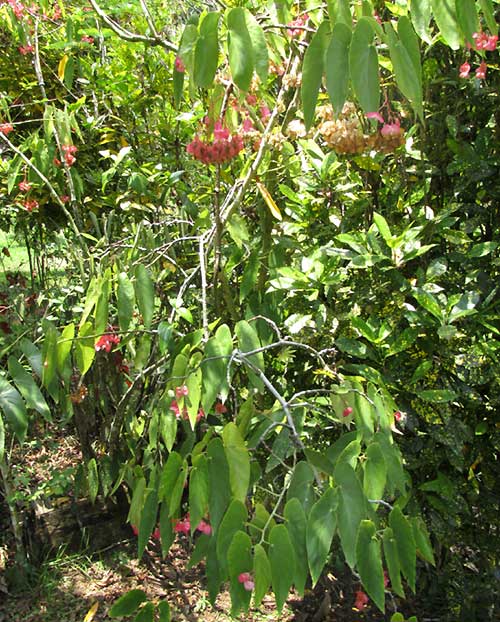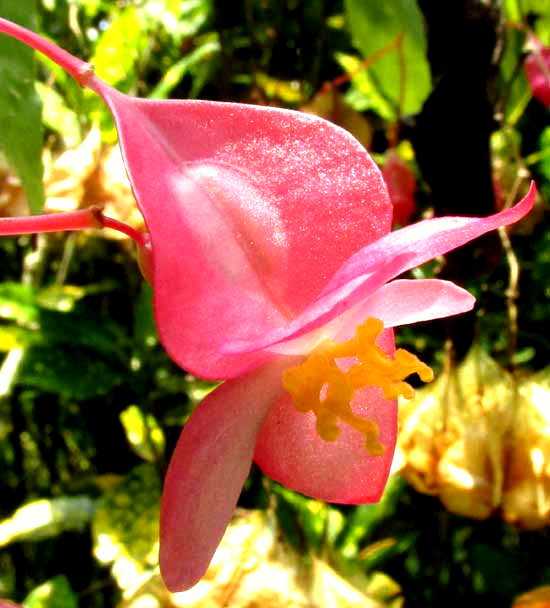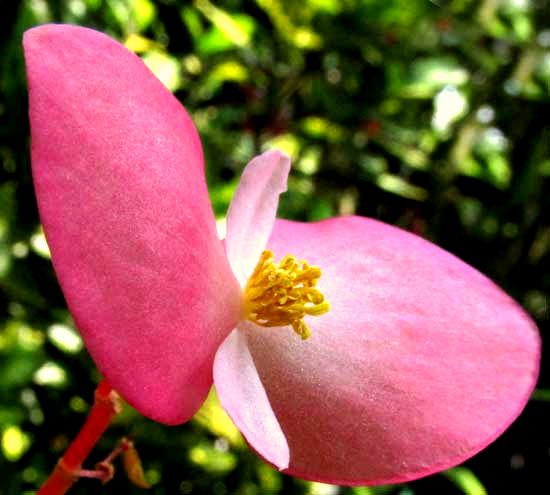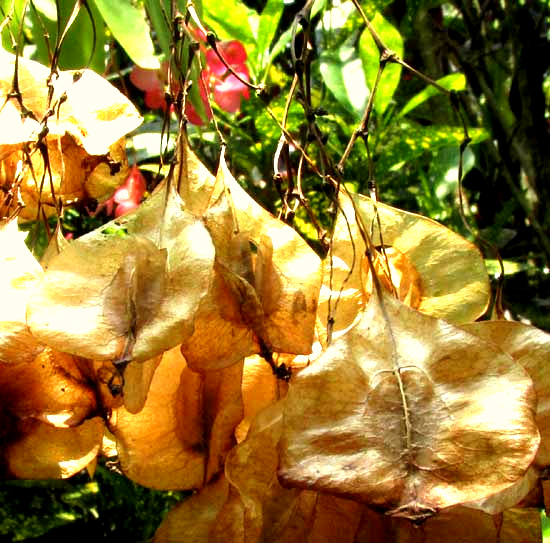Excerpts from Jim Conrad's
Naturalist Newsletter
from the May 15, 2016 Newsletter with notes from a visit in mid April to Lacanja Chansayab in the Lacandon Reserve; elevation 200m (650ft), N16.604°, W90.917°; Chiapas, MÉXICO
ANGEL WING BEGONIA BUSH
In mid April when I was in the Lacandon community of Lacanja Chansayab in Chiapas's Lacandon Reserve in extreme southeastern Mexico, beside the informal little family campground where I pitched my tent, the matriarch of the family kept a shady little spot where she hung orchids among tree limbs and planted colorful ornamentals. One of those ornamentals was the tallest begonia I'd ever seen -- about eight feet tall (2.4m). You could call it a spindly bush or even a small tree, for its branches seemed to be at least semi-woody. Usually we think of begonias as herbs. Below, you can see a branch of this giant one loaded with clusters of pink flowers:

Closer up you see the shrubs very asymmetrical leaves and a cluster of female flowers, below:

With the unusual leaf shape this was clearly one of numerous cultivars and species known as an angel wing begonia, but I hoped to figure out exactly which species it was, or its cultivar name, so I took more pictures. A close-up of a dangling female flower with its three-winged ovary at the picture's top, beneath which four pink, petal-like "tepals" expand, from the center of which three styles bearing yellow, curly stigmas arise, is shown below:

A male flower also with four pink tepals but with one pair much smaller and narrower than the other, subtending a cluster of yellow stamens, is shown below:

And some dry, bladdery, three-winged, capsular fruits ready to fall are shown below:

No native Mexican species of the genus Begonia looks like this, so it's an introduced plant. With its large size and other striking features, it was relatively easy to figure out, approximately, what to call the plant.
I say "approximately," because with nearly 1800 recognized species -- depending on who is counting -- the genus Begonia is considered by some as constituting the fifth-largest genus of all flowering plants, so there are many species to choose from. Also, begonia species have been hybridized and otherwise had their genes manipulated for so long that often it's hard to determine whether a plant is a wild species or a cultivar with genes from who-knows-how-many wild ancestors.
Our Chiapas plant comes closest to BEGONIA COCCINEA, usually known as Angel Wing Begonia, though sometimes as Dragon Wing or Cane Begonia. It's native to southern Brazil, and many important cultivars have been developed from it, one reason for its popularity being that it tends to bloom all year. Some cultivars look herbaceous and have so lost their leggy, semi-woody feature that they're used in hanging baskets. Information I find says that they reach three or four feet high, but ours were at least twice that tall. Some cultivars based on Begonia coccinea have leaves with silvery spots on them, and/or intensely red blossoms.